Welcome to the vibrant world of Begonia Flamingo Queen – a dazzling botanical gem that has graced my own garden with its radiant beauty. Picture this: a burst of colors that can turn any ordinary day into a botanical fiesta. As someone who has witnessed the enchantment of Begonia Flamingo Queen, let me be your guide into the world of this exquisite plant.
Key Takeaways
- 🌸 Vibrant Hues: The Begonia Flamingo Queen boasts hues ranging from delicate pinks to fiery reds, making it a visual delight.
- 🍃 Unique Leaf Texture: Its leaves aren’t just leaves; they are a textural masterpiece with patterns that elevate the plant’s aesthetic appeal.
- 💧 Water-wise Wonder: While it loves hydration, this begonia has a resilient nature, making it an ideal choice for both novice and experienced plant enthusiasts.
- 🌞 Lighting Charisma: Thriving in bright, indirect light, the Begonia Flamingo Queen is your go-to plant for areas kissed by sunshine.
- 🌿 Compact Charm: With a compact growth habit, this begonia fits seamlessly into various spaces, making it perfect for both indoor and outdoor settings.
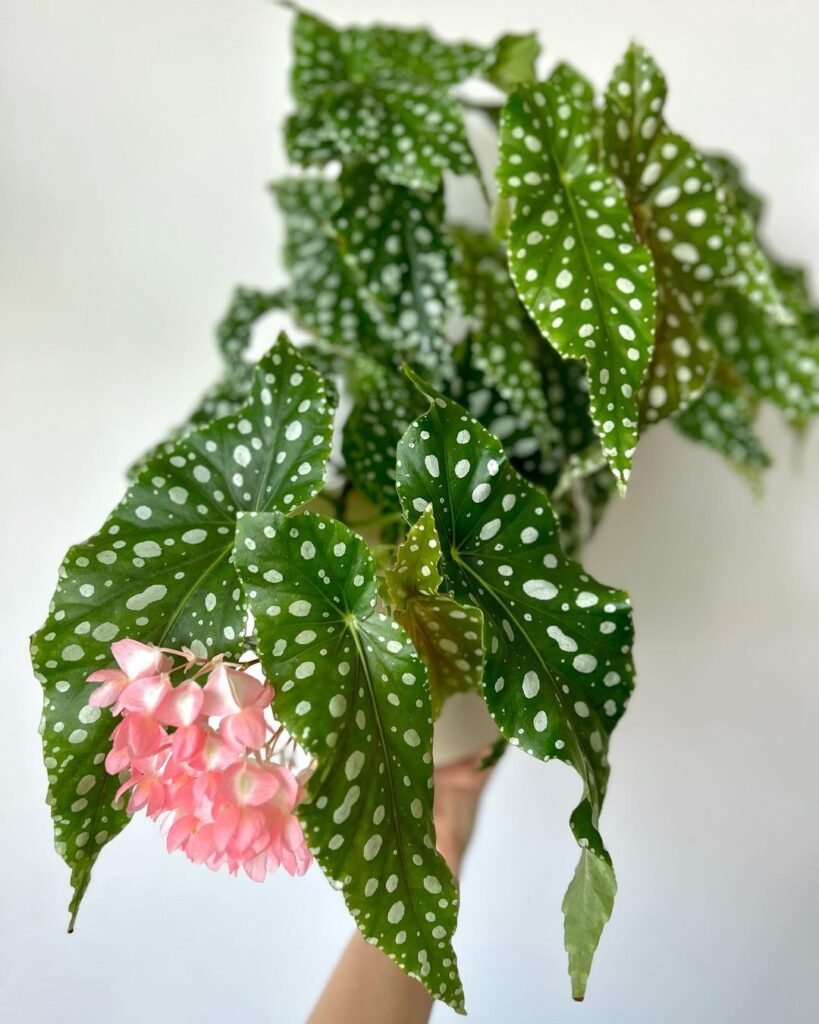
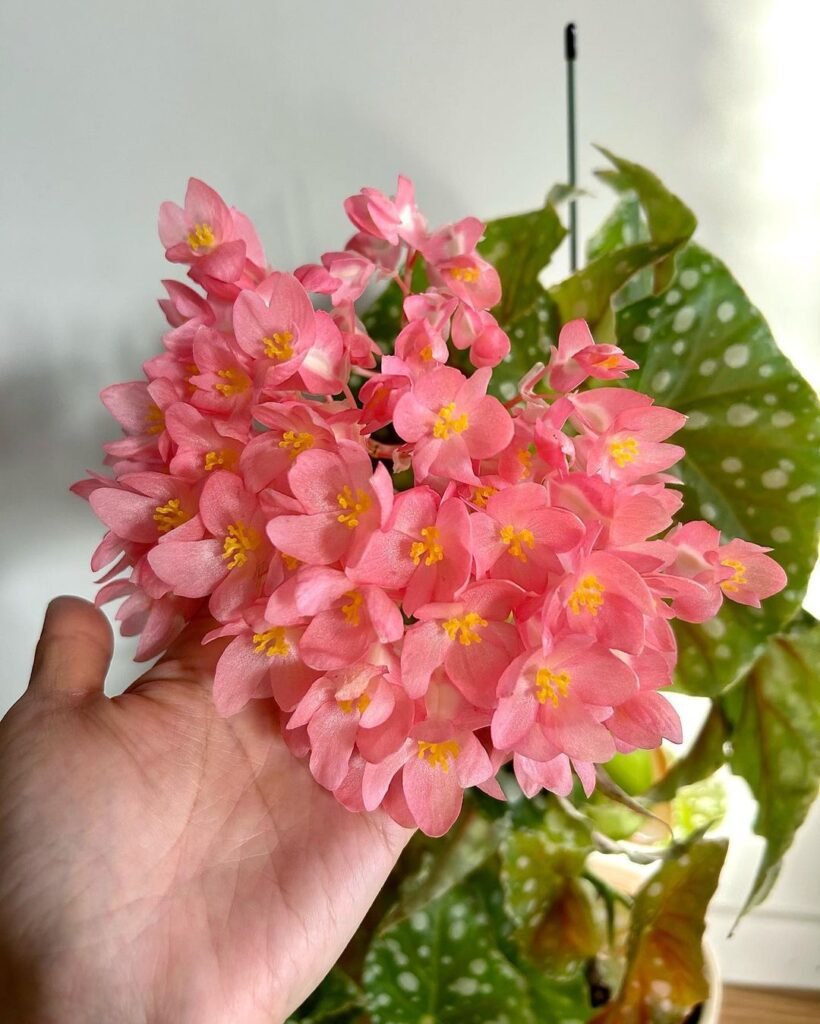

💚 Care Guide Overview
| Care Aspect | Quick Overview |
|---|---|
| 💦 Watering | Keep the soil consistently moist but not waterlogged. |
| 🌞 Lighting | Thrives in bright, indirect light, avoiding harsh sun. |
| 🌱 Soil and Fertilizing | Plant in well-draining soil; fertilize every 2-4 weeks. |
| 🌡️ Humidity and Temperature | Enjoys moderate to high humidity, and thrives in temperatures between 65-75°F (18-24°C). |
| ✂️ Pruning and Shaping Tips | Encourage bushiness by pinching back leggy stems; prune for shape as needed. |
| 🌱 Propagation Tips | Propagate through stem cuttings or division for new plants. |
🌺 Appearance of Begonia Flamingo Queen
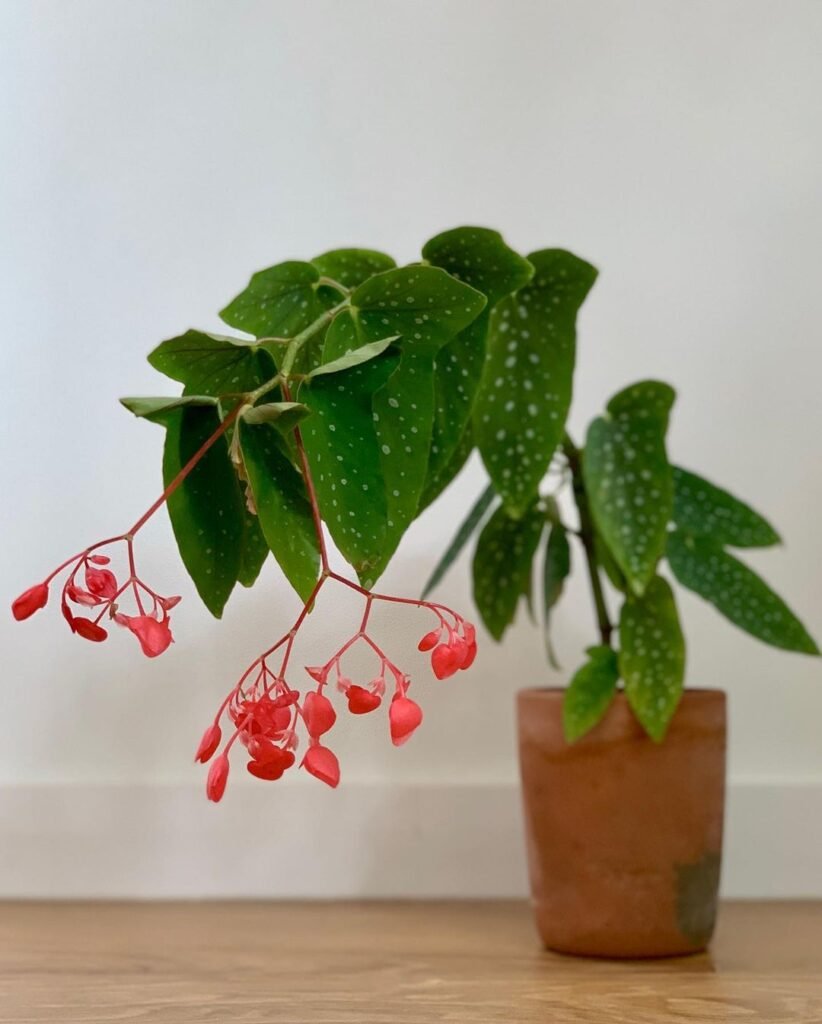

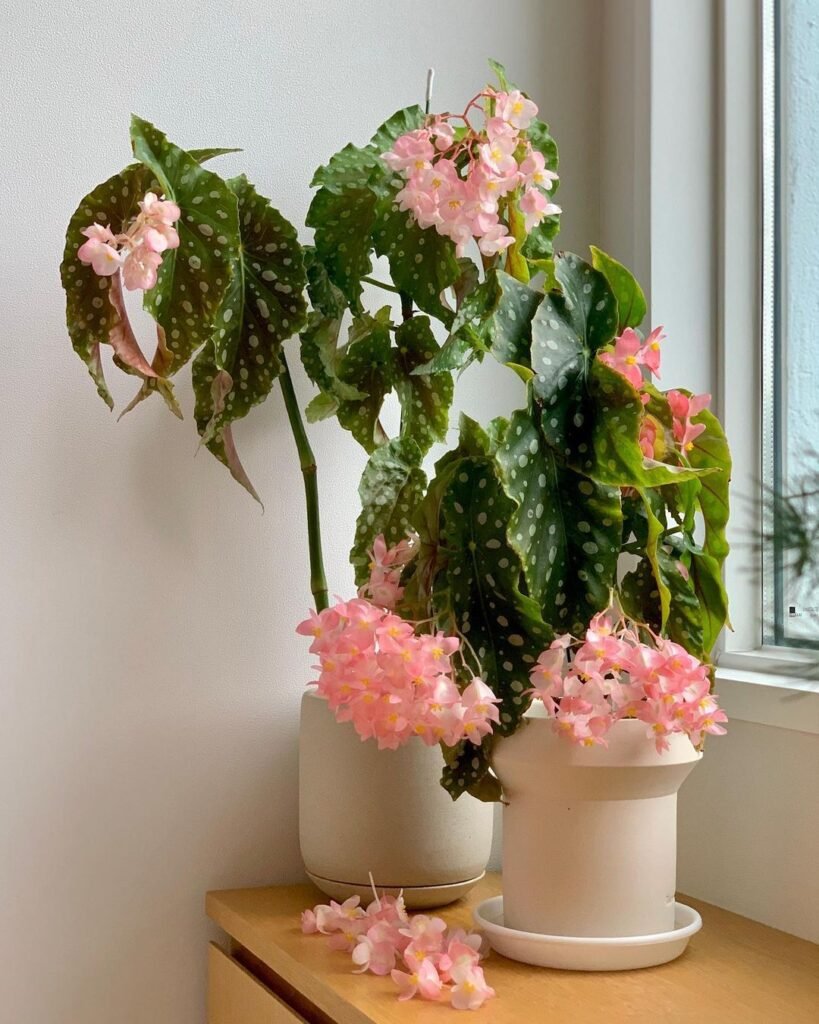
The Begonia Flamingo Queen is a visual spectacle, showcasing a captivating fusion of colors and textures. Its leaves, heart-shaped and velvety, steal the spotlight with a mesmerizing blend of vibrant pinks, reds, and silver hues. Each leaf is an individual work of art, adorned with intricate patterns that add a touch of sophistication to its overall appearance. The plant’s compact structure ensures that this botanical beauty can effortlessly grace both indoor spaces and garden landscapes.
Adding to its allure, the Begonia Flamingo Queen produces clusters of dainty flowers that echo its signature color palette. These delicate blooms, perched on elegant stems, provide a delightful contrast to the lush foliage. With its striking presence and attention-grabbing features, this begonia is more than just a plant; it’s a living masterpiece that transforms any environment into a floral haven.
Not the plant for you? Check out my full list of 78 Types of Begonia!
🌱 How to Grow Begonia Flamingo Queen
💦 Watering
Begonia Flamingo Queen exhibits a preference for consistently moist soil, emphasizing the importance of a well-balanced watering routine. To achieve this delicate equilibrium, employ the following care tip: allow the top inch of the soil to dry out between waterings. This practice not only prevents the risk of overwatering but also encourages the development of a robust root system. Keep a watchful eye on the plant’s response to watering, adjusting the frequency based on environmental conditions. In colder months, when growth slows, reduce watering to accommodate the plant’s natural rhythm.
🌞 Lighting
Light, a vital component in the life of the Begonia Flamingo Queen, requires thoughtful consideration for optimal growth. While these plants thrive in bright, indirect light, direct exposure to intense sunlight should be avoided to prevent leaf scorching. Implementing a care tip, periodically rotate the pot to ensure uniform exposure to light on all sides. This simple action promotes even growth and prevents the plant from leaning towards the light source, ensuring a well-balanced and visually appealing structure. By understanding and incorporating these nuanced care practices, you pave the way for a robust and flourishing Begonia Flamingo Queen that will grace your space with its vibrant beauty.
🌱 Soil and Fertilizing
Creating an ideal foundation for your Begonia Flamingo Queen begins with the choice of soil and a well-thought-out fertilizing regimen. Opt for a well-draining potting mix, ensuring that water doesn’t linger around the roots. Incorporate a balanced, water-soluble fertilizer every 2-4 weeks during the growing season to provide essential nutrients. A care tip: Adjust the fertilizer strength based on the plant’s response and dilute it during the dormant period to support a healthy growth cycle.
🌡️ Humidity and Temperature
Recreating the native environment of the Begonia Flamingo Queen involves managing both humidity and temperature. Aim for moderate to high humidity levels, especially if you’re cultivating the begonia indoors. Misting the leaves occasionally or placing a tray of water nearby can help maintain the desired moisture levels. In terms of temperature, strive for a comfortable range between 65-75°F (18-24°C). Protect the plant from sudden temperature drops and drafts, as it thrives in stable and mild conditions. Understanding the significance of these soil and environmental factors ensures your Begonia Flamingo Queen not only survives but thrives in its cultivated habitat.
🌿 Choosing the Perfect Pot



Selecting the right pot for your Begonia Flamingo Queen is an often-overlooked yet crucial aspect of cultivating this botanical beauty. The choice of pot can significantly impact the plant’s health and aesthetic appeal. Consider the following factors when choosing the perfect pot:
| Pot Material | Ideal Size | Drainage Holes |
|---|---|---|
| Terracotta | Choose a pot that allows for a couple of inches of space around the root ball. | Essential for preventing waterlogged soil and root rot. |
| Plastic | Opt for a pot 1-2 inches larger than the root ball. | Ensure there are sufficient holes at the bottom to facilitate proper drainage. |
| Ceramic | A heavier pot can provide stability, preventing top-heavy plants from tipping over. | Adequate drainage holes are crucial to prevent water stagnation. |
Understanding the nuances of pot selection ensures that your Begonia Flamingo Queen not only thrives in its new home but does so with style and stability. By carefully considering these factors, you contribute to the overall well-being and longevity of this exquisite botanical companion.
🍃 Seasonal Strategies
Navigating the changing seasons is a crucial skill when cultivating the Begonia Flamingo Queen. This botanical wonder, like any living organism, responds to environmental shifts, and tailoring your care routine accordingly can make a significant difference in its well-being.
Seasonal Considerations
- Spring Awakening: As the days lengthen and temperatures rise, embrace the growth spurt by adjusting your watering frequency. Monitor the soil moisture closely, and consider a slight increase in fertilization to support the plant’s heightened metabolic activity.
- Summer Splendor: With the peak of the growing season, ensure your Begonia receives ample shade during the hottest parts of the day to shield it from intense sunlight. Regularly inspect for pests, as warmer weather often attracts unwanted visitors.
- Fall Transition: As temperatures gradually cool, begin tapering off the watering schedule. Reduce fertilization as the plant enters a period of dormancy, preparing for the upcoming winter rest.
- Winter Rest: During the dormant phase, limit watering to prevent waterlogging, and maintain a stable indoor temperature to protect against cold drafts. Prune sparingly, focusing on removing dead or damaged growth.
Care Tip: Rotate your Begonia Flamingo Queen periodically to ensure uniform exposure to light, promoting balanced growth across all sides of the plant. This simple step prevents the plant from leaning or stretching towards a light source, maintaining an aesthetically pleasing shape. Understanding the seasonal nuances ensures that your Begonia thrives year-round, adapting seamlessly to the changing rhythms of nature.
🌱 Companion Plants
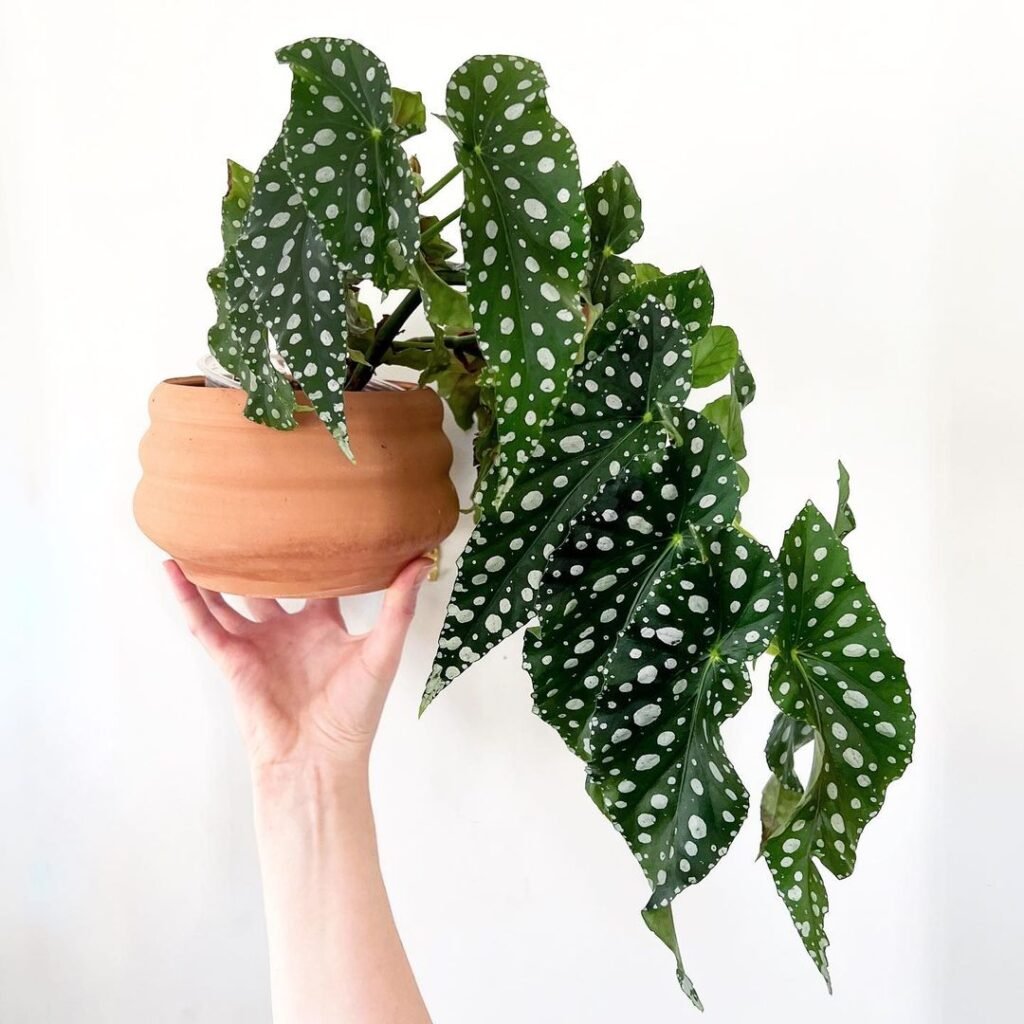
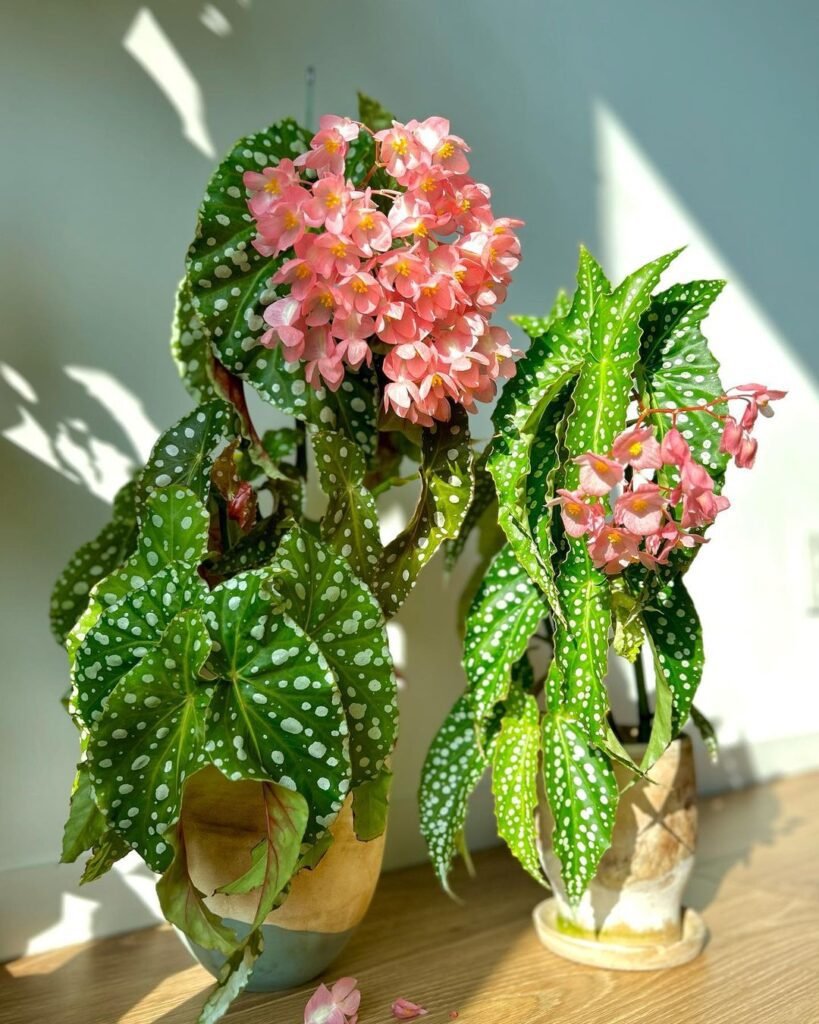

Enhance the visual symphony in your garden by strategically choosing companion plants that complement the elegance of your Begonia Flamingo Queen. Selecting suitable botanical neighbors can not only elevate the aesthetic appeal but also contribute to a harmonious and mutually beneficial environment.
Complementing Companions
| Companion Plant | Attributes |
|---|---|
| Ferns (e.g., Maidenhair Fern) | Provide lush, feathery foliage that contrasts beautifully with the Begonia. |
| Impatiens | Offer vibrant, colorful blooms that create a striking visual ensemble. |
| Snake Plant (Sansevieria) | Bring contrasting, architectural shapes and thrive in similar conditions. |
| Coleus | Introduce a variety of leaf colors and patterns for a dynamic garden palette. |
By strategically pairing your Begonia Flamingo Queen with these compatible companions, you create a captivating botanical tapestry that not only enhances the overall aesthetic but also fosters a supportive ecosystem for healthier plant growth. This thoughtful approach to garden design ensures that each plant thrives in the company of its green neighbors, creating a visual feast for both you and your garden visitors.
🌿 Pest Safeguarding
Maintaining a vigilant watch against potential pests is a crucial element in ensuring the health and vitality of your Begonia Flamingo Queen. While these plants are hardy, they can still fall prey to common pests that may infiltrate your garden or indoor space.
Common Pests to Beware Of
- Aphids (Aphis spp.): These tiny, sap-sucking insects can cluster on the underside of leaves, affecting the plant’s overall health.
- Spider Mites (Tetranychidae): These arachnids create fine webs, sucking the juices out of leaves and causing discoloration.
- Mealybugs (Pseudococcidae): White, cotton-like pests that often gather in leaf axils or other sheltered areas.
Pest Management Strategies
- Inspect Regularly: Routinely examine your Begonia for any signs of pests. Early detection allows for prompt intervention.
- Natural Predators: Introduce natural predators like ladybugs or predatory mites to keep pest populations in check.
- Neem Oil Solution: A diluted neem oil solution applied to the foliage acts as an effective organic repellent.
- Isolation: If pests are detected, consider isolating the affected Begonia to prevent the infestation from spreading.
Care Tip: Maintain a clean and tidy growing environment by removing fallen leaves and debris regularly. This reduces hiding places for pests and minimizes the risk of infestations. Adopting these pest management strategies ensures that your Begonia remains a haven free from unwanted visitors, allowing it to thrive in a pest-free sanctuary.
🌸 Blooming
The beguiling beauty of the Begonia Flamingo Queen extends beyond its captivating foliage, revealing a secret language through its delicate blooms. Understanding the nuances of its flowering patterns and care requirements allows you to witness the full splendor of this botanical spectacle.
Decoding Flowering Cycles
| Stage | Description |
|---|---|
| Budding | Young flower buds emerge, adding a promise of upcoming beauty to the plant. |
| Blooming | The begonia unfurls its stunning flowers, showcasing an array of vibrant colors and intricate details. |
| Fading | As flowers age, they gradually fade. While this is a natural process, deadheading can enhance the plant’s appearance. |
| Dormancy | A period of reduced flowering activity, typically during winter. It’s a natural part of the plant’s growth cycle. |
Floral Symphony Management
Understanding the stages of the Begonia Flamingo Queen’s flowering cycle empowers you to provide targeted care. Be attentive to the needs of your plant during the budding and blooming stages, ensuring optimal conditions for vibrant flowers. Additionally, during the dormancy period, adjust your care routine to respect the natural rhythm of the plant’s life cycle. This insightful approach allows you to fully appreciate and cultivate the blooming brilliance of your Begonia.
🌿 Conclusion
In the intricate tapestry of botanical wonders, the Begonia Flamingo Queen stands as a radiant masterpiece, captivating hearts with its vibrant hues and lush foliage. As you embark on the journey of nurturing this botanical gem, remember that success lies not only in understanding its care requirements but also in cultivating a relationship with a living entity that responds to your thoughtful attention.
In your care, the Begonia transforms into more than just a plant; it becomes a living expression of nature’s artistry, reflecting the delicate dance of seasons and the resilience of life. As you witness its flourishing beauty, take a moment to appreciate the shared journey—the moments of growth, the changing seasons, and the flourishing blooms.
May your Begonia Flamingo Queen continue to thrive, adding a touch of botanical elegance to your life.
🌸 FAQ
How often should I water my Begonia Flamingo Queen?
Watering frequency depends on various factors, including climate, pot size, and soil composition. Generally, aim to keep the soil consistently moist, allowing the top inch to dry out between waterings. Adjust the frequency based on environmental conditions.
Can Begonia Flamingo Queen tolerate direct sunlight?
While it appreciates bright, indirect light, direct exposure to intense sunlight can lead to leaf scorching. Place your Begonia in a location that receives filtered sunlight to ensure optimal growth.
What’s the ideal temperature range for Begonia Flamingo Queen?
Begonia Flamingo Queen thrives in temperatures between 65-75°F (18-24°C). Protect it from sudden temperature drops, and maintain stable indoor conditions, especially during winter dormancy.
How can I encourage more blooms on my Begonia?
To encourage abundant blooms, provide optimal care during the budding and blooming stages. Ensure proper lighting, maintain consistent moisture, and deadhead fading flowers to redirect energy for new growth.
Is the Begonia Flamingo Queen prone to pests?
While generally hardy, Begonia Flamingo Queen can attract common pests like aphids and spider mites. Regularly inspect your plant, introduce natural predators, and use organic solutions like neem oil to manage pest infestations.

Writer/Green Thumb/Explorer – Rooted deep in the rich soils of Devon, I’ve cultivated a vast expertise in plant care, helping greenery thrive in homes across the UK. When I’m not crafting detailed plant care guides, I’m journeying through the lush landscapes of the West Country, unearthing nature’s secrets and sharing them with fellow plant enthusiasts. Every leaf has a story, and I’m here to tell it.





